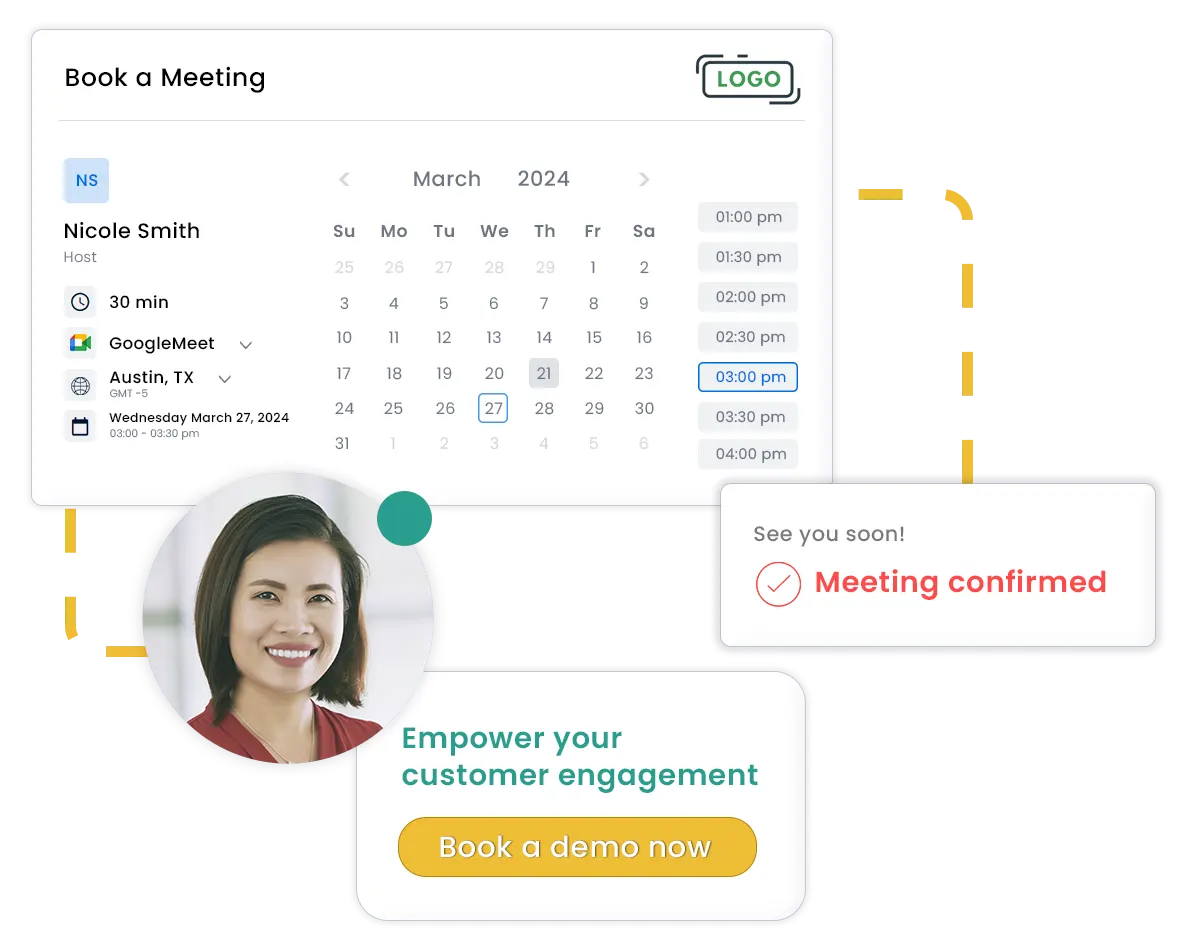With the start of the new year, for whatever reason, many companies will be looking to add new team members to their organizations. Bringing new people onboard at your organization is an expensive proposition. Not only do you want to get it right the first time, but you want to bring the ‘right’ person on board as quickly as possible.
The old adage says that it’s “cheaper to keep her”. The same is true in business as it is in your personal life. Hiring the wrong person not only creates a period of time where work isn’t being done either efficiently or the way it ‘should’ be done, but all the administrative time involved with hiring, and all the training time used just goes straight down the drain. With an eye towards saving you money, and with another firmly focused on making systems more efficient, we’ve come up with ten ways you can improve your hiring processes.
1 – Foster Partnerships with Other Hiring Managers
One of the things that separates great business people from run-of-the-mill business people is the ability to delegate responsibilities to trusted partners. When you’re busy working ‘on’ your business rather than ‘in’ your business you’re wasting time and effort. When you’re able to hand off important tasks that need to be done ‘right’ to a trusted partner, efficiency goes up, and more importantly, you’re able to work in your business, doing the things that make you money rather than doing things that steal time away from productivity.
Find a recruiting partner that you can trust to send qualified candidates your way. Sales funnels need to constantly have fresh new leads trickle into the top of the funnel in order to keep sales pumping out of the bottom. Your candidate hiring funnel is no different, and one way in which you can keep the candidates coming into your funnel is to work with a recruiting partner that places highly qualified candidates for the roles you need filled in that very same funnel.
2 – Utilize Available Data to Estimate the Hiring Cycle Length
When working with hiring managers, one of the key points that needs to be addressed in your discussions is just how long it will take in order to fill the position you’re needing to hire for. The timeframe you want the process to take may be unrealistic. Relying on solid data and having a data-driven approach to the process can not only provide realistic expectations, but it can also hold everyone involved accountable for the metric markers that need to be reached in order for the process to come to fruition.
In order to have realistic hiring expectations, look at past hiring cycles for how long they lasted. Consider how many submissions were received for similar positions. Determine just how many viable candidates were available for these previous positions. Review how long the process took from start to finish. Once you know the raw numbers with each associated step of your process, you can come up with a solid timeframe that can be expected for this new hiring cycle.
3 – Maintain a Talent Funnel
As mentioned in point one, sales funnels and hiring funnels aren’t so different from each other. In a sales funnel you need fresh leads constantly in order for the funnel to provide a steady revenue stream. You also need to have a strategy to interact with your prospects and move them down the funnel from cold to warm to hot to purchase. Similarly, you need to constantly be adding new potential hires to your funnel. You also need to interact with them along the way and not only determine their viability as a candidate, but also keep them interested in becoming a part of your organization, especially if their a candidate that seems to be a good fit.
In order to keep a Talent Funnel fresh, make sure that you regularly post engaging and informative content about your company. Creating organic traffic to your site and social media platforms not only keeps potential clientele interested, it signals to potential hiring candidates that you’re a company that has something to say and that you’re relevant in the marketplace.
4 – Utilize Your Social Media Networks
Your social media networks can be used for more than the organic content creation many companies use them for. These networks can also be used in order to find hidden gems in the market that may not be actively looking for a new opportunity, but might just be a perfect candidate for that hard to fill position that you’re desperate to get filled. Social media can shoulder much of the burden of finding new candidates for you, while the rest of your hiring team can focus on other necessary tasks and steps in the process. Translation? You can delegate finding great candidates to your social media networks.
How does that work? One of the best things in marketing, word-of-mouth, can also be utilized in your hiring process. When you have influential people who trust your company saying good things about you, and maybe even about your openings, you can bet that top talent that might not have been in the job market before but heard about your opening will start listening.
5 – Create Your Job Openings in Advance
One of the steps in the hiring process that can be a colossal time suck is the actual production and distribution of job postings. A wise person once said, “when you fail to plan, you plan to fail.” With that in mind, plan for eventual openings at your organization. Plan to have to fill even the most secure positions that you would never dream you’d need to fill. Put together job descriptions and responsibilities in advance. When a position opens, you’ll be a step ahead in the process simply by already having your job posting ready to roll.
You can use templates to get yourself started. Focus on the true core responsibilities for each position. Make sure that you’re covering your company culture as well, because ‘fit’ is something that too few people take into account when hiring.
6 – Move the Recruiting Process Along Faster with Scheduling Tools
When you’ve got your recruiting strategy streamlined, take the time to also streamline any administrative tasks that might need to be undertaken in the process. One such task you could consider is Scheduling Automation. Being able to coordinate multiple candidate schedules and the schedules of your hiring team can be an arduous process if you aren’t taking advantage of available scheduling tools.
It’s not rare to have multiple candidates active in your hiring pipeline. You may need to balance multiple schedules for multiple interviews and not having a capable tool to find available times can be a drain on your administrative resources. We’re looking for ways to speed up your hiring process, which in turn will increase your profitability. This step is not to be ignored. It’s essential to shaving crucial time off of your hiring process and freeing up the administrative time needed for it.
7 – Automation and Reminders
Much of the hiring process mirrors the sales cycle. Why? You’re selling your available position and organization to candidates, and they’re selling themselves to you too. Whether we realize it or not, hiring is sales. As such, one of the biggest ways to lose out on a sale is for you to no-show an appointment or conversely for your prospect to no-show said appointment. Automation and reminders need to be a standard part of the hiring process.
Make sure that every person involved in the hiring process, especially where interviews are concerned, is aware of every meeting they need to attend. Additionally, make sure that the where and when of the meetings/interviews are clearly communicated. Finally, make sure that regular reminders go out to everyone involved so that no one is uttering “oh no!” over a “no show”.
8 – Customize Your Interview Workflow
Interviews aren’t like snapback ball caps. One size does not fit all. Did you estimate that an interview would take 30 minutes but you booked an hour’s worth of time? Fail. Did you estimate an interview would take 30 minutes but you find you’re still speaking with your candidate an hour later? Fail. Stick to the timeframes you specify.
Also, have you overcommitted your time in the past? Booked too many interviews to the point that you can’t fit them all in? Take stock of your interview process. Determine how much time you truly need to, and can spend on each interview, and book the time accordingly.
9 – Track Your Metrics
Sumo Scheduler’s Analytics Builder can help you build customized reports to quickly track previous and upcoming interviews. You can keep track of interview cancellations and reschedules or even view the hiring process’s progress. These reports can help you with insights into how time is being used and whether it’s being used efficiently.
We previously discussed how analytical data can help to improve your hiring process. Metrics like these can provide a great foundation for setting realistic expectations for the hiring process. They can also illuminate areas of your process that can be improved.
10 – Integrate SUMO Scheduler with Your Hiring Process
We’ve discussed many ways that you can improve your hiring process. One of the easiest ways to improve it, is to integrate SUMO Scheduler with your process. SUMO’s robust platform can help you integrate virtually every step we’ve discussed from robust Calendar APIs that integrate with multiple calendar types, to Scheduling Automation and Instant Booking tools, to power Data Analytics tools.
For more information on Sumo Scheduler book a free consult with an expert!




